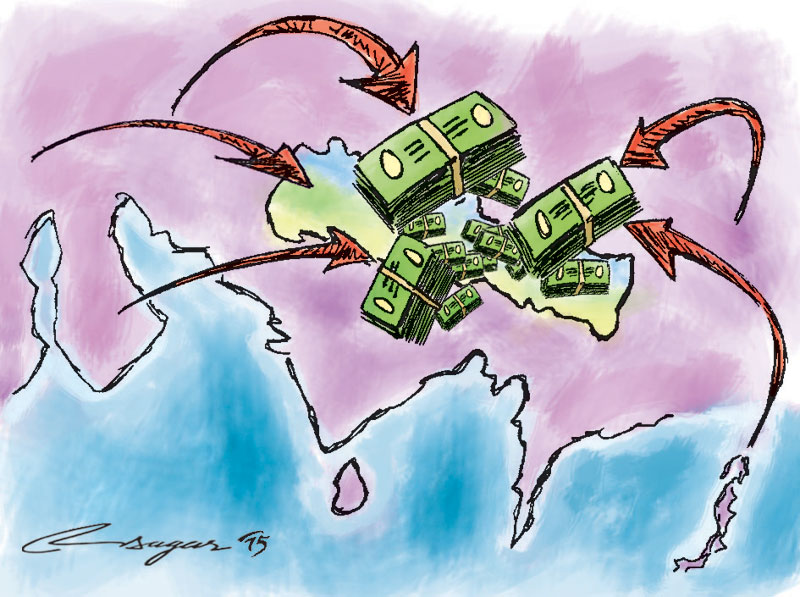One pc currency depreciation raises remittance inflow by 1.17 per cent
One per cent depreciation in the value of Nepali currency vis-a-vis the US dollar prompts remittance inflow to go up by 1.17 per cent, a recent study says, signalling tendency of Nepalis working abroad to send more money home when the rupee weakens.
“This result provides evidence for the working of wealth effect of the exchange rate devaluation,” says the working paper titled ‘Remittances and Exchange Rate Linkages: Experiences of Nepal’ prepared by Bhubanesh Pant, director at Nepal Rastra Bank (NRB), the central bank, and NRB Deputy Director Birendra Bahadur Budha.
The ‘wealth effect’ of the exchange rate devaluation is a situation wherein depreciation in the home country’s exchange rate enables its migrant citizens to accumulate more wealth, which provides incentives to those working abroad to send more money home, where family members can buy more goods or increase investments in various areas, including real estate.
“In the event of depreciation in value of home currency, overseas migrants also tend to send back future planned remittances by borrowing money,” says paper, which has drawn conclusions by analysing trends of 2006 to 2015.
Nepali rupee was valued at 73.16 per US dollar on January 1, 2006. Since then Nepali rupee has depreciated to 107.58 per dollar. Along with the currency depreciation, overseas migration of Nepalis has also gone up during the period. In fiscal year 2006-07, 204,533 Nepalis left the country for employment purpose. In fiscal year 2014-15, that number shot up to 512,887.
As more and more Nepalis took up jobs abroad, country’s remittance income also went up. Nepal received $1.35 billion in remittance in 2006. By 2015, the country’s remittance income jumped to $6.2 billion.
Higher inflow of remittance has allowed the country to maintain a surplus of current account and balance of payments. But it also tends to raise liquidity level in the country’s banking system.
The monetary authority, thus, needs to come up with clear operational framework and introduce adequate sterilisation tools to absorb excess liquidity, says the paper, which was prepared by analysing trends of major overseas job destinations for Nepalis, namely India and Gulf countries, including Saudi Arabia, Qatar, United Arab Emirates and Kuwait.
However, the paper acknowledges rupee’s depreciation is not the only determinant for higher remittance inflow.
In general, remittance inflow depends on socio-demographic characteristics of migrants and their families as well as the macroeconomic and political variables.
“While socio-demographic characteristics include variables such as the years of employment of migrants, household income level, marital status of migrants and education level, the macroeconomic determinants consist of economic activities in host countries, wage rates, exchange rates, interest rate differentials and facility of transferring funds, among others,” says the paper.
At the same time, seasonal remittance inflow is positively associated with oil price index, and industrial production index of India and advanced economies. In other words, the cyclical or seasonal nature of remittance inflow is determined by the economic activity in India, Gulf countries and advanced economies.
“The direct link between remittance inflow and the economic activities in Gulf countries and India stresses on the need to adopt measures to cushion the adverse impact of economic downturn (in the Gulf and India) on remittance inflow to Nepal,” adds the paper.






